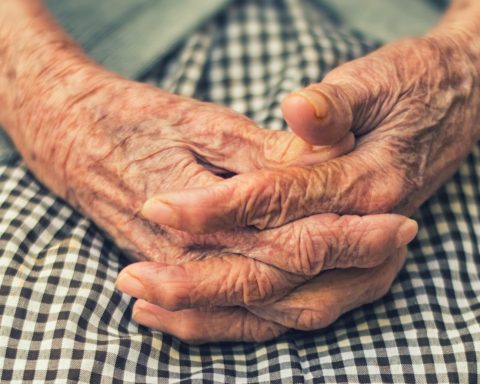Hana MO Elhassan is a London-based registrar.
Changing times
“Conventional” dermatology as practiced in the west has predominantly focused on lightly pigmented skin types within medical education1 and research.2 The under-representation of skin of colour (SOC) impacts quality care provision, with physician confidence3 and competence4 being lower when diagnosing in this demographic. This is increasingly problematic given that the UK population is diversifying, with projections that the black and minority ethnic group will increase from 8 to 21% of the UK population by 2051, and the Asian and mixed groups will increase by up to 153% and 249% respectively.5 It is thus increasingly important that general practitioners are confident and competent in assessing and managing conditions affecting a diverse spectrum of skin and hair types, especially because dermatological presentations form a large proportion of the caseload.
Cultural competence enables clinical competence
A good starting point is developing better awareness of common skin and hair care practices within various ethnic minority populations…
A good starting point is developing better awareness of common skin and hair care practices within various ethnic minority populations, appreciating their clinical significance, and using this knowledge to counsel patients accordingly.
There are a plethora of cultural practices amongst various ethnic minority populations that are well internalised and widespread. Some of these practices are clinically beneficial, whilst others may predispose to harm. For example, in afro-textured hair, hair styling is richly varied and creative, often allowing for easier maintenance. Despite this, there is also potential for associated harm. Amongst the various styling techniques, hairstyles which use high tension, including certain braid and hair extension types, place strain on the hair follicles and predispose to traction alopecia. By increasing knowledge and understanding of these hairstyling practices and their risk, clinicians may be able to better guide on conservative management strategies, to prevent the progression of hair loss.
The use of chemical relaxers to permanently straighten tightly coiled hair has existed since the early 1900s. Relaxers contain strong alkalis which break down bonds within the hair, weakening the strand in the process. Relaxers are often applied at home, in the form of at-home-relaxer kits (similar to home hair dye kits). If the relaxer is accidentally applied to the skin (e.g around the hairline), this powerful substance can cause chemical burns, and predispose to alopecia.
Unspoken cultural practices affect wider counselling on health and behaviour change.
Sunscreen use as a photoprotective measure has consistently been demonstrated to have a poorer uptake in communities of colour. Although melanoma is less common in SOC,* photoprotection is important in guarding against the development and exacerbation of pigment disorders, photo-aging, and basal cell carcinoma.6 Familiarisation of practices affecting minority communities, and their clinical implications is key to clinicians’ ability to signpost helpful management techniques, and promote healthier practices.
How to bridge this gap
It is crucial that treating physicians are able to approach patient concerns from a position of sound knowledge, and cultural awareness, and that this learning is embedded into curricula to optimise the delivery of care. This is of course a significant undertaking for any one clinician to do. Thankfully, there are some great freely accessible resources on hand to help with individual and team development. The University of Nottingham’s Centre for Evidence Based Dermatology Skin of Colour Resource is a great repository of carefully compiled high quality, regularly updated, comprehensive evidence-based information literature, guidelines and patient information leaflets. This is an excellent resource for personal learning, and can be integrated into journal clubs, undergraduate education, and CPD sessions. Additional resources to reinforce this aspect of practice, is the British Association of Dermatology Skin of Colour Education Resources, including the skin diversity descriptors guidance documents which are quick to read.
More widely, the impact of cultural skin and hair care practices needs objective evaluation. Just as some cultural practices have historically been transformed with evidence-based medicine (e.g., developing aspirin from the Sumerians’ use of willow bark), there may be wisdom (or even harm) in practices internalised in communities of colour. Unspoken cultural practices affect wider counselling on health and behaviour change. With adequate cultural awareness, all clinicians should be able to provide good quality care provision for patients, irrespective of their ethnic background.7 While curricula evolve to improve the disparities in care provision, each of us can take ownership of our own clinical education and practice, to pick up our own mantles in bridging the divide.
*Deputy Editor’s note – see also: https://bjgplife.com/skin-deep-is-a-useful-open-access-dermatology-resource/
References
- Louie P, Wilkes R. Representations of race and skin tone in medical textbook imagery. Soc Sci Med. 2018;202:38–42. doi: 10.1016/j.socscimed.2018.02.023
- Lester JC, Jia JL, Zhang L, Okoye GA, Linos E. Absence of images of skin of colour in publications of COVID-19 skin manifestations. Br J Dermatol. 2020;183(3):593–595. doi: 10.1111/bjd.19258.
- Hutchinson E, Yoseph R, Wainman H. Skin of colour: essentials for the non-dermatologist. Clin Med (London) 2023; 23(1): 2–8.
- Peterknecht E, Reid E, Cheung K, Rajasekaran A. Improving recognition among undergraduate and postgraduate trainees of dermatological conditions in skin of colour: a cross‐sectional quality improvement project. Clin Exp Dermatol 2022; 47(12): 2261–2264.
- https://www.nottingham.ac.uk/research/groups/cebd/resources/skin-of-colour/introduction.aspx
- Tsai J, Chien AL. Photoprotection for Skin of Color. Am J Clin Dermatol. 2022 Mar;23(2):195-205. doi: 10.1007/s40257-021-00670-z. Epub 2022 Jan 19.
- Gorbatenko-Roth K, Prose N, Kundu RV, Patterson S. Assessment of Black Patients’ Perception of Their Dermatology Care. JAMA Dermatol. 2019 Oct 1;155(10):1129-1134. doi: 10.1001/jamadermatol.2019.2063.
Featured photo by Nsey Benajah on Unsplash.






